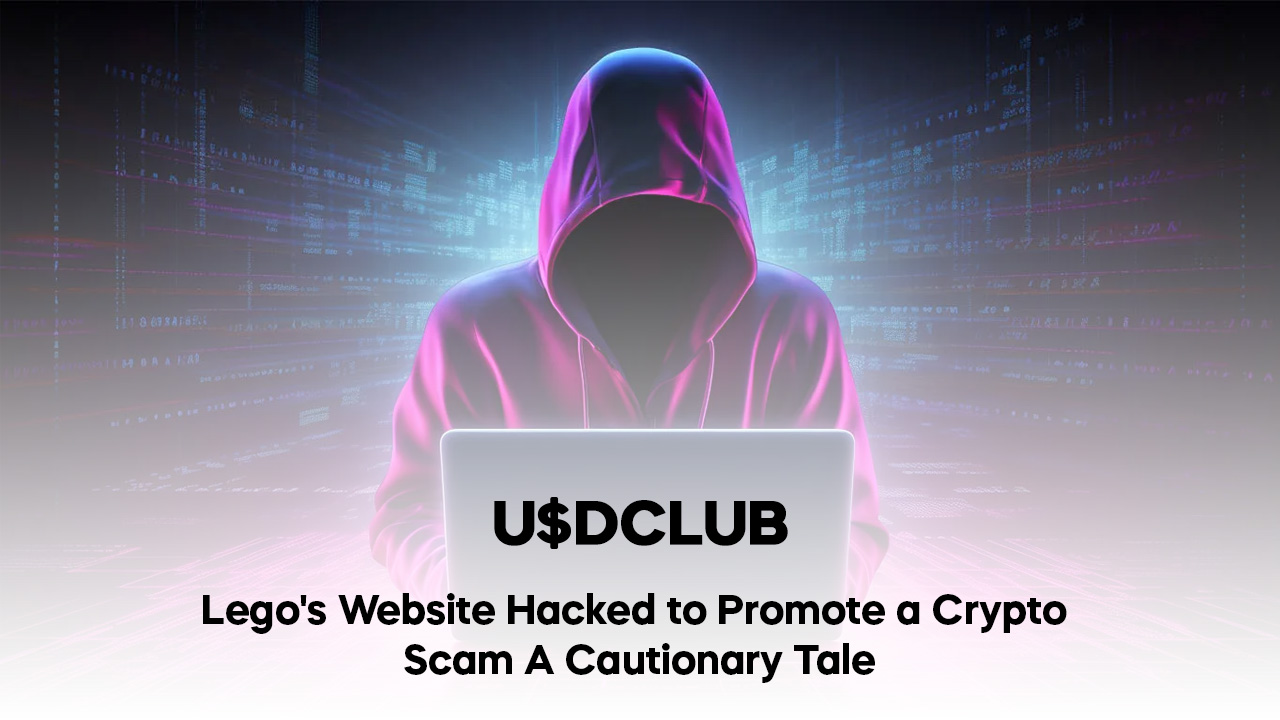In a concerning development in the realm of cybersecurity, the popular toy company Lego recently fell victim to a hacking incident that saw its official website exploited to promote a cryptocurrency scam. This incident not only raises alarms about the security of major brands but also underscores the ever-evolving nature of online threats that can impact both businesses and consumers alike. In this blog, we will explore the details of the incident, the implications for the Lego brand and its customers, and the broader context of cybersecurity in the digital age.
The Incident: What Happened?
-
*Timeline of the Breach:*
The hacking incident was reported on [insert date], when users began to notice suspicious activity on Lego’s official website. Visitors were redirected to a fraudulent page that claimed to offer exclusive Lego-themed cryptocurrency investments, enticing users with promises of high returns on investments made in the digital currency.
-
*Nature of the Scam:*
The fraudulent page featured logos and branding that mimicked Lego’s official aesthetic, making it difficult for unsuspecting users to discern the legitimacy of the offering. The scam leveraged the popularity of Lego to attract potential investors, exploiting the brand’s reputation to gain credibility.
-
*Immediate Reactions:*
Once the breach was identified, Lego’s cybersecurity team worked swiftly to remove the malicious content and secure the website. However, by that time, numerous visitors had already been exposed to the scam, potentially leading to financial losses for unsuspecting individuals.
The Impact on Lego and Its Customers
-
*Brand Reputation:*
A significant consequence of the breach is the potential damage to Lego’s brand reputation. Consumers trust well-established brands, and incidents like these can lead to skepticism and diminished confidence in the company. While Lego is known for its commitment to quality and safety, this hacking incident raises questions about its cybersecurity measures and overall brand integrity.
-
*Financial Losses for Customers:*
Many individuals who fell victim to the scam may have lost money as a result of the fraudulent investment scheme. Scammers often prey on individuals’ trust and enthusiasm for popular brands, leading to significant financial repercussions for unsuspecting victims.
-
*Customer Sentiment:*
The incident may lead to negative sentiment among Lego’s customer base. Parents, collectors, and fans of the brand may feel betrayed and anxious about the security of their personal information and financial data when engaging with the company’s online platforms.
The Broader Context of Cybersecurity
-
*The Rise of Online Scams:*
The incident involving Lego is part of a broader trend of increasing online scams and cyber threats. As the digital landscape continues to evolve, scammers are becoming more sophisticated in their tactics, employing techniques that exploit the trust consumers place in established brands.
-
*Cryptocurrency Scams:*
The rise of cryptocurrencies has given birth to a new wave of scams, with scammers leveraging the hype and excitement surrounding digital assets to lure unsuspecting investors. Many scams promise unrealistic returns, enticing individuals to invest their money in fraudulent schemes. The Lego incident is a stark reminder of the dangers associated with the intersection of reputable brands and the crypto space.
-
*Importance of Cybersecurity Measures:*
This incident highlights the critical importance of robust cybersecurity measures for businesses, especially those operating in the digital space. Companies must invest in advanced security protocols and regularly assess their vulnerabilities to protect themselves and their customers from cyber threats.
-
*Consumer Awareness and Education:*
The Lego hacking incident serves as a wake-up call for consumers regarding the need for vigilance and skepticism when engaging with online investment opportunities. Individuals should be educated about recognizing red flags, conducting thorough research, and verifying the legitimacy of websites and offers before investing their money.
How to Protect Yourself from Online Scams
-
*Verify URLs:*
Always double-check the URL of any website before entering personal or financial information. Legitimate companies typically use secure URLs (https://) and their official domains. Look for slight variations in spelling or unusual extensions that may indicate a fraudulent site.
-
*Research Investment Opportunities:*
Before investing in any cryptocurrency or financial opportunity, conduct thorough research. Look for reviews, news articles, and reports from reputable sources to verify the legitimacy of the investment.
-
*Be Skeptical of Unrealistic Promises:*
If an investment opportunity sounds too good to be true, it probably is. Be wary of offers that promise high returns with little to no risk, as these are common tactics used by scammers.
-
*Enable Two-Factor Authentication:*
Utilize two-factor authentication (2FA) on accounts where available. This adds an additional layer of security, making it more difficult for unauthorized users to access your accounts.
-
*Report Suspicious Activity:*
If you encounter a suspicious website or investment opportunity, report it to the relevant authorities, such as the Federal Trade Commission (FTC) in the United States or your local consumer protection agency.
The Response from Lego
-
*Security Measures:*
In the aftermath of the incident, Lego has committed to strengthening its cybersecurity measures. The company is likely to conduct a thorough review of its online platforms and implement enhanced security protocols to prevent similar incidents in the future.
-
*Customer Communication:*
Lego should prioritize clear and transparent communication with its customers regarding the breach. Providing updates, guidance, and resources on how customers can protect themselves will help rebuild trust and confidence in the brand.
-
*Cooperation with Authorities:*
Lego is expected to cooperate with law enforcement agencies to investigate the hacking incident. Identifying the perpetrators and holding them accountable is crucial in mitigating the risks of similar scams targeting consumers.
Conclusion
The recent hacking incident involving Lego serves as a sobering reminder of the vulnerabilities that exist in the digital age. As cyber threats become increasingly sophisticated, both businesses and consumers must remain vigilant in protecting themselves from scams and fraudulent activities.
For Lego, the challenge lies in rebuilding its reputation and restoring consumer trust after such a breach. By investing in robust cybersecurity measures and maintaining open communication with its customer base, the company can work to mitigate the impact of this incident.
As consumers, it is essential to stay informed about online scams and adopt proactive measures to protect personal and financial information. Education, awareness, and vigilance are key in navigating the complex digital landscape and ensuring a safer online experience.
For more updates on the latest developments in the cryptocurrency market, cybersecurity, and insightful investment strategies, stay tuned to USDCLUB.us, where we provide timely news and analysis from the world of finance.







